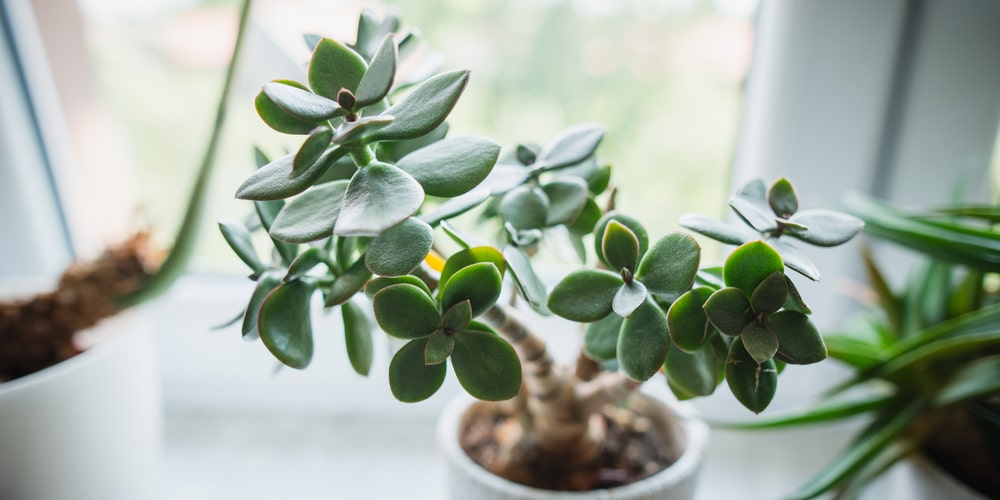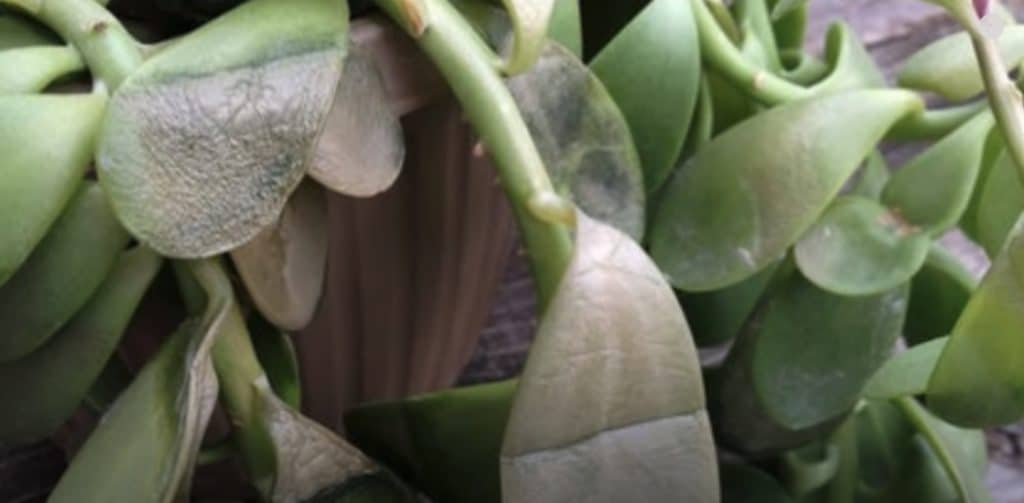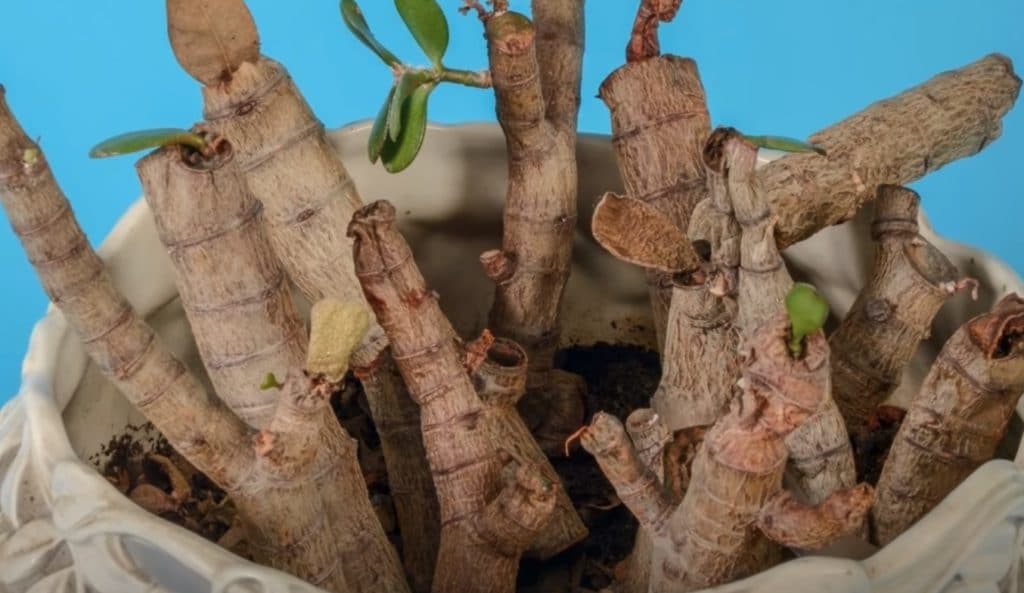Many people make the mistake of either under or overwatering their jade plant. Let’s look at how to tell if you have an overwatered or underwatered jade plant and what to do to solve the problem.
Jade plants are beautiful succulents that are popular houseplants. They are relatively low maintenance and look great. You must water your jade plant regularly, but don’t overwater. Jade plants are succulents, so they require less water than the average houseplant but do need enough water to thrive. We
Jade Plant Watering Requirements
Jade plant’s growing season is during the spring and summer, and at these times of year, you should ensure the soil is kept damp. You can water your plant two or three times a week but should be careful not to waterlog your plant.
You can reduce watering to once a week in the fall. During the winter month, jade plants don’t require much water as they become dormant and won’t put on new growth. You can let the top inch of soil completely dry out before watering the plant. It’s best to water your plant about once a month in the winter.
The precise amount of water needed by your jade plant will vary depending on the climate you live in. If you live in a hotter climate, you may find that your plant requires more water due to evaporation.
It’s best to test your plant’s soil by pushing your finger into the ground up to an inch. This will let you see how moist the soil is and whether your plant requires more water. Be careful not to overwater or underwater your plant.
Overwatered Jade Plant
When a jade plant is overwatered, the soil will feel soggy, and the plant may have started to turn brown or drop its leaves. You can stick your finger into the ground to see how wet it is and determine whether you’ve overwatered your plant. Regularly overwatering a jade plant will cause root rot, which will affect the health of your plant.
When a jade plant’s roots begin to rot, the plant isn’t able to take in the water or nutrients it requires and will eventually die. The most common symptom of an overwatered jade plant is yellowing leaves. The leaves will also feel softer than usual.
How to revive an overwatered jade plant
The good news is that you may be able to save your overwatered jade plant by repotting. However, this will depend on the severity of the situation and how long the plant has been overwatered for. If your plant has been waterlogged for a long time, you’ll be unlikely to save it.
Remove the jade plants existing soil
The first step in dealing with an overwatered jade plant is to remove it from its pot and remove as much of the waterlogged soil as possible. Waterlogged soil isn’t good for your plant’s roots, so it’s best to report your plant.
Remove rotted roots
If your roots have started to rot and become soggy, you can remove them with a sharp knife. Ensure you’ve removed all the affected areas. If you cut a healthy root, you should be able to see that the center is white. When cutting the roots, if the center is either brown or black, this indicates root rot. Keep cutting until you can see the white core of the root. Your jade plant will have more chance of surviving if the rotted roots are removed. In time the healthy roots will regrow, and your plant will recover.
Repot your Jade Plant
Once you’ve removed the soggy soil and cut off affected roots, you can then report your jade plant. Choose soil that’s well-draining. You can either buy a dedicated succulent soil or can add some peat moss or perlite to a general houseplant soil.
It may also be a wise idea to add a layer of gravel or stones to the bottom of the pot. This will help with drainage and mean that if you overwater your plant again, the excess water will run to the bottom away from the plant’s roots. It would help if you also used a pot with drainage holes in the bottom to help stop waterlogging.
After you’ve repotted your jade plant, don’t water it for a few days. This will give the plant’s roots and existing soil time to dry out. Once the plant has recovered, you can start watering it again, but be careful not to overwater and repeat the same mistake.
When watering, try and get the droplets off the leaves if it is in the blistering sun. This can lead to a sunburned jade plant.
Underwatered Jade Plant
It can be hard to tell by looking at your jade plant whether it’s been overwatered or underwatered, as many of the symptoms are the same. Rather than relying on a set watering schedule, it’s best to check the soil’s moisture daily and then decide whether your plant needs water.
If your jade plant has started to develop brown spots or its foliage looks wrinkled and feels soft, this is an indication it’s been underwatered. Jade plants can suffer from dehydration and even sunburn if they’ve been left in the scorching sun. A sign of an underwatered jade plant is that the leaves will start to fall off. An underwatered jade plant may have leaves that feel very dry due to a lack of water.
Recovery from Underwatering
It’s a good idea first to check your plant’s soil to determine that the plant is, in fact, underwatered. If the soil feels very dry, your plant probably needs a drink. You can give your jade plant a good watering. If it’s been sitting in the scorching sun or on a very hot windowsill, it may be a good idea to move the plant.
Conclusion
It’s essential to know the difference between under and overwatering as the symptoms can look the same. Check the soil by sticking your finger into the ground at least an inch. If the soil feels very soggy, you’ve probably overwatered your plant, and it may be suffering from root rot. On the other hand, if the soil feels very dry, the plant is likely dehydrated.


